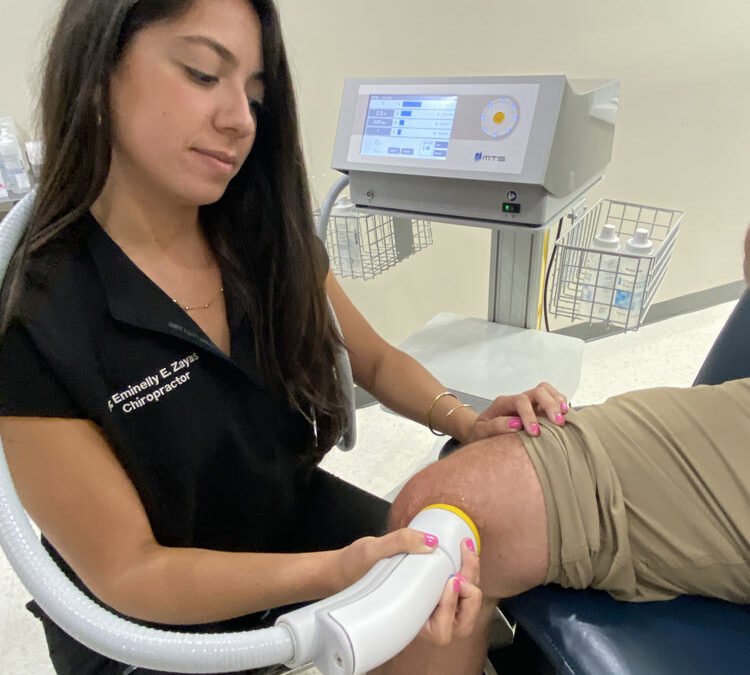Arthritis, a chronic condition affecting millions of individuals worldwide, can significantly impact one’s quality of life by causing persistent joint discomfort and limited mobility. Amidst the array of treatment options available, softwave therapy is a non-invasive approach to alleviate arthritis-related joint pain. This innovative technology harnesses the power of sound waves to target and stimulate damaged tissues, offering potential relief for those seeking alternatives to traditional arthritis management. In this article, we delve into softwave therapy, exploring its applications, benefits, and how it fits into the realm of arthritis care.
Arthritis and Its Impact on Joint Health
Arthritis encompasses a range of disorders characterized by inflammation and stiffness in the joints. The most common types of arthritis include osteoarthritis, rheumatoid arthritis, and psoriatic arthritis, each with its unique causes and manifestations. Arthritis can affect people of all ages, but it is most commonly associated with the aging process. As joints endure wear and tear over the years, the protective cartilage that cushions them gradually erodes, leading to pain, swelling, and reduced joint mobility.
The impact of arthritis on joint health extends beyond physical discomfort. It can have profound effects on an individual’s overall well-being, hindering their ability to perform daily activities, engage in physical exercise, or enjoy a pain-free life. Joint pain and stiffness can disrupt sleep patterns, lead to mood changes, and even contribute to a sense of isolation as social activities become more challenging. Understanding the nature and severity of arthritis is crucial for those who seek effective pain management solutions, as it helps determine the most suitable treatment options.
The various types of arthritis can present with distinct symptoms and complications. Osteoarthritis, often referred to as “wear-and-tear” arthritis, primarily affects weight-bearing joints such as knees, hips, and the spine. Rheumatoid arthritis, on the other hand, is an autoimmune disorder that targets multiple joints and can lead to systemic symptoms like fatigue and fever. Psoriatic arthritis tends to accompany the skin condition psoriasis and can affect joints in the fingers and toes, causing inflammation and deformities. Recognizing the specific form of arthritis a person has is essential in tailoring an appropriate treatment plan, which may include softwave therapy as a viable option for pain relief.
Understanding Softwave Therapy
At its core, softwave therapy utilizes high-energy acoustic waves generated by a specialized device. These waves are focused on the targeted area of the body, such as an arthritic joint, with the aim of promoting tissue regeneration and reducing pain. Unlike surgical interventions, softwave therapy requires no incisions, anesthesia, or prolonged recovery periods, making it an attractive option for those seeking relief from arthritis-related discomfort.
The mechanism behind softwave therapy lies in its ability to stimulate the body’s natural healing processes. When the high-energy waves interact with damaged or inflamed tissues, they trigger a series of responses at the cellular level. This includes increased blood flow to the area, the release of growth factors, and the activation of stem cells. These processes contribute to tissue repair and regeneration, helping to alleviate joint pain and improve joint function over time. It is often performed as an outpatient procedure, allowing patients to return to their daily activities shortly after treatment.
Unlike many traditional arthritis treatments, such as medication or joint surgery, softwave therapy offers a minimally invasive alternative with minimal downtime and fewer potential side effects. This makes it particularly appealing to individuals who prefer non-invasive solutions or who have not experienced significant relief from other treatments. However, the suitability of softwave therapy varies from person to person and depends on factors such as the type and severity of arthritis, as well as individual medical history. Consulting with a healthcare professional is crucial to determine if this treatment is an appropriate option for managing arthritis-related joint pain.
Benefits of Softwave Therapy for Arthritis
Softwave therapy offers several potential benefits for individuals seeking relief from arthritis-related joint pain. Here are some of the notable advantages:
- Non-Invasive: Non-invasive procedure, meaning it doesn’t require surgical incisions or the use of pharmaceuticals, making it a safer and more comfortable option for many patients.
- Reduced Pain: One of the primary goals is to alleviate pain associated with arthritis. By targeting the root causes of pain, such as inflammation and tissue damage, it can provide substantial relief.
- Improved Functionality: Can enhance joint function by promoting tissue healing and regeneration. This can result in increased mobility and a greater range of motion for affected joints.
- Minimal Downtime: Unlike some surgical interventions, softwave therapy typically involves minimal downtime. Patients can often resume their daily activities shortly after treatment.
- Long-Lasting Effects: Many individuals experience lasting pain relief and improved joint function, reducing the need for ongoing pain medications.
- Low Risk of Side Effects: Softwave therapy is generally well-tolerated, with a low risk of adverse side effects. It is considered a safe option for many individuals, even those with underlying health conditions.
Softwave therapy holds promise as a non-invasive and effective approach to managing arthritis-related joint pain. Its potential benefits include pain reduction, improved joint functionality, and minimal downtime, making it a viable treatment option for individuals seeking relief from the challenges of arthritis.
Is Softwave Therapy Right for You?
Before considering softwave therapy as a treatment option for arthritis, it’s essential to assess whether it aligns with your specific needs and circumstances. Here are some factors to consider:
- Type and Severity of Arthritis: The type and severity of your arthritis can influence the effectiveness of softwave therapy. It may be more suitable for certain types of arthritis or specific stages of the condition.
- Overall Health: Your overall health plays a role in determining if softwave therapy is a viable option. Discuss any underlying medical conditions with your healthcare provider to ensure the treatment is safe for you.
- Medical History: Your medical history, including past treatments and surgeries, can impact the suitability of softwave therapy. Be sure to provide your healthcare provider with a complete medical history.
- Treatment Goals: Consider your treatment goals. Are you seeking pain relief, improved joint function, or both? Discuss your objectives with your healthcare provider to determine if softwave therapy aligns with them.
- Cost and Insurance: Softwave therapy may not always be covered by insurance, and it can be an investment. Evaluate the cost and whether it fits within your budget or if there are alternative treatments covered by your insurance.
- Consultation with a Professional: Ultimately, the best way to determine if softwave therapy is right for you is to consult with a qualified healthcare professional, such as a rheumatologist or orthopedic specialist. They can assess your specific condition, discuss your goals, and provide personalized recommendations.
While softwave therapy offers potential benefits for managing arthritis-related joint pain, its suitability varies from person to person. It’s essential to have a thorough evaluation by a healthcare professional to assess whether this non-invasive treatment aligns with your specific arthritis type, severity, and overall health. Your healthcare provider can provide personalized guidance and help you make an informed decision regarding the use of softwave therapy in your arthritis management plan.
What to Expect During a Softwave Therapy Session
Softwave therapy sessions for arthritis are generally well-tolerated and non-invasive. When you arrive for your session, you will be greeted by a trained chiropractor specializing in this form of therapy. The first step involves discussing your specific arthritis symptoms and medical history to ensure that Softwave therapy is the right choice for you. It’s essential to communicate any concerns or questions you may have during this consultation to ensure a tailored and effective treatment plan.
During the therapy session itself, you’ll be comfortably positioned, and the chiropractor will use a specialized device that emits low-intensity shockwaves or sound waves to target the affected joint areas. These shockwaves are directed precisely at the source of your joint pain. You might feel a mild tingling or tapping sensation during the treatment, but it is typically painless. The session’s duration can vary depending on the severity of your arthritis and the area being treated, but most sessions last between 15 to 30 minutes. It does not require anesthesia or downtime, allowing you to resume your daily activities immediately after the session.
After the Softwave therapy session, some patients report experiencing a mild sense of relief right away, while others may notice improvements in joint mobility and reduced pain over the course of several days. The number of sessions needed can vary from person to person, and your chiropractor will discuss a treatment plan tailored to your specific needs. It is a promising option for those seeking non-invasive arthritis pain relief, with the potential to improve joint function and enhance your overall quality of life.
Contact Rittenhouse Square Chiropractic
Our experienced chiropractors specialize in Softwave therapy and are committed to helping you find a non-invasive solution to your arthritis discomfort. We understand that each patient is unique, and we’ll provide a personalized consultation to assess your condition and determine if Softwave therapy is the right choice for you. Contact us today to schedule a consultation and take the first step towards a more comfortable, pain-free life.

